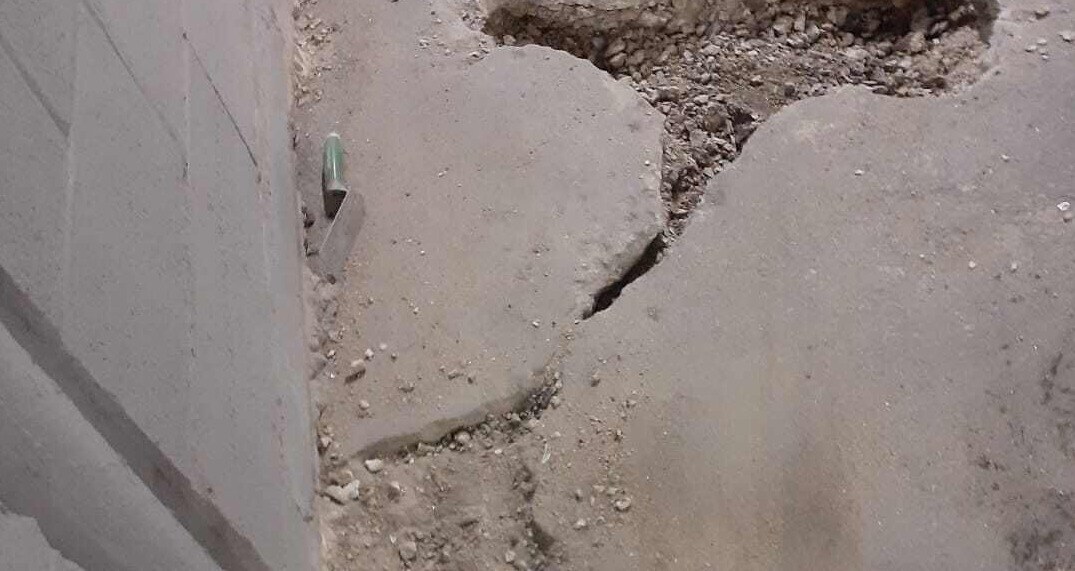
Cracks in your business’s concrete floor may seem like a minor nuisance, but they can quickly become bigger problems if ignored. Beyond being unsightly, they can pose safety hazards, compromise the structural integrity of your space, and open the door to more costly repairs down the line.
CustomCrete has helped hundreds of commercial and industrial clients throughout the Chicago area repair and protect their concrete floors with long-lasting solutions tailored to each facility’s needs.
Addressing cracks in concrete floors early helps protect your investment, reduce liability, and extend the life of your facility’s flooring. Whether you manage a warehouse, retail store, manufacturing plant, or office building, understanding the causes of concrete cracking and how to fix it can save time, money, and stress.
Why Concrete Cracks Happen
Concrete is strong—but it’s not invincible. Here are a few common reasons cracks develop in commercial concrete floors:
- Shrinkage: As concrete cures, it naturally shrinks. If the mix isn’t properly designed or cured, shrinkage can lead to surface cracks.
- Heavy Loads: In facilities where heavy machinery, pallets, or forklifts are in constant motion, excessive weight can stress the concrete and cause cracking.
- Temperature Fluctuations: Changes in temperature cause concrete to expand and contract. Without proper control joints, this movement can lead to cracks.
- Improper Installation: Mistakes in mixing, pouring, or finishing the concrete can lead to weak spots that are prone to cracking.
- Moisture Intrusion: Water seeping into or beneath concrete can cause it to weaken, shift, and eventually crack.

Why You Shouldn’t Ignore Concrete Cracks
Some cracks may seem cosmetic at first, but all cracks have the potential to get worse over time. When left untreated, they can:
- Widen and deepen, compromising the structural integrity of your floor.
- Allow moisture, chemicals, or contaminants to seep in.
- Create uneven surfaces that pose trip hazards.
- Reduce the overall aesthetic of your facility.
Prompt repair not only improves safety but also helps you maintain a professional appearance in front of customers, clients, or inspectors.
How to Fix Cracks in Floor Concrete
Fixing cracked concrete floors depends on the size and severity of the cracks. Here’s a step-by-step approach:
1. Assess the Damage
Identify whether the crack is superficial or structural. Hairline cracks typically affect only the surface and are easy to repair. Wider or deeper cracks may signal underlying issues and require more thorough intervention.
2. Clean the Area
Remove any debris, dust, or loose material from the crack. Use a wire brush, vacuum, or compressed air to ensure the crack is clean and dry. This step is crucial for ensuring that repair materials bond properly.
3. Choose the Right Repair Method
- For Hairline Cracks: Use a concrete crack filler or polymer-modified cement. These materials penetrate the crack and harden to prevent further movement.
- For Larger Cracks: Consider using epoxy or polyurethane injections, which are designed to fill wider gaps and bond the concrete together.
- For Structural Cracks: It’s best to consult a professional. You may need to reinforce the slab or evaluate the subbase before applying a repair.
4. Apply the Repair Material
Follow the manufacturer’s instructions to fill the crack. Smooth the surface and allow it to cure fully before exposing the area to traffic.
5. Finish and Seal
Once the repair has cured, consider sealing the floor or applying a protective coating. This helps prevent future cracking and reduces wear and tear from daily operations.
Preventing Future Cracks
While it’s impossible to eliminate all cracking, there are several ways to minimize the risk:
- Install Control Joints: These allow for expansion and contraction, helping to manage natural concrete movement and/or shrinkage.
- Reinforce High-Traffic Zones: Use thicker slabs or reinforcement materials in areas with heavy equipment.
- Use the Right Sealant: Sealing your concrete with a quality commercial sealer helps reduce surface damage, moisture penetration, and staining.

CustomCrete’s Approach to Cracked Concrete Floors
At CustomCrete, we’ve helped countless businesses in the Chicago area assess and repair cracks in floor concrete. Whether it’s a quick fix or a more complex restoration project, we evaluate the root cause and recommend the most effective solution. From grinding and sealing to resurfacing and polishing, our team ensures your repaired floor will last—and look great.
We also help businesses implement preventative strategies, such as joint filling, sealant application, and moisture mitigation systems that stop cracking before it starts.
Final Thoughts
Cracked concrete doesn’t mean you have to start over—but it does mean it’s time to act. Small cracks can quickly become big liabilities, especially in commercial settings where safety, efficiency, and appearance matter.
By identifying the cause, applying the right repair method, and working with an experienced contractor, you can restore your floor and extend its service life.
Need expert help? Visit our blog “Concrete Restoration Pricing at CustomCrete“ to learn more about concrete repair solutions and pricing.
